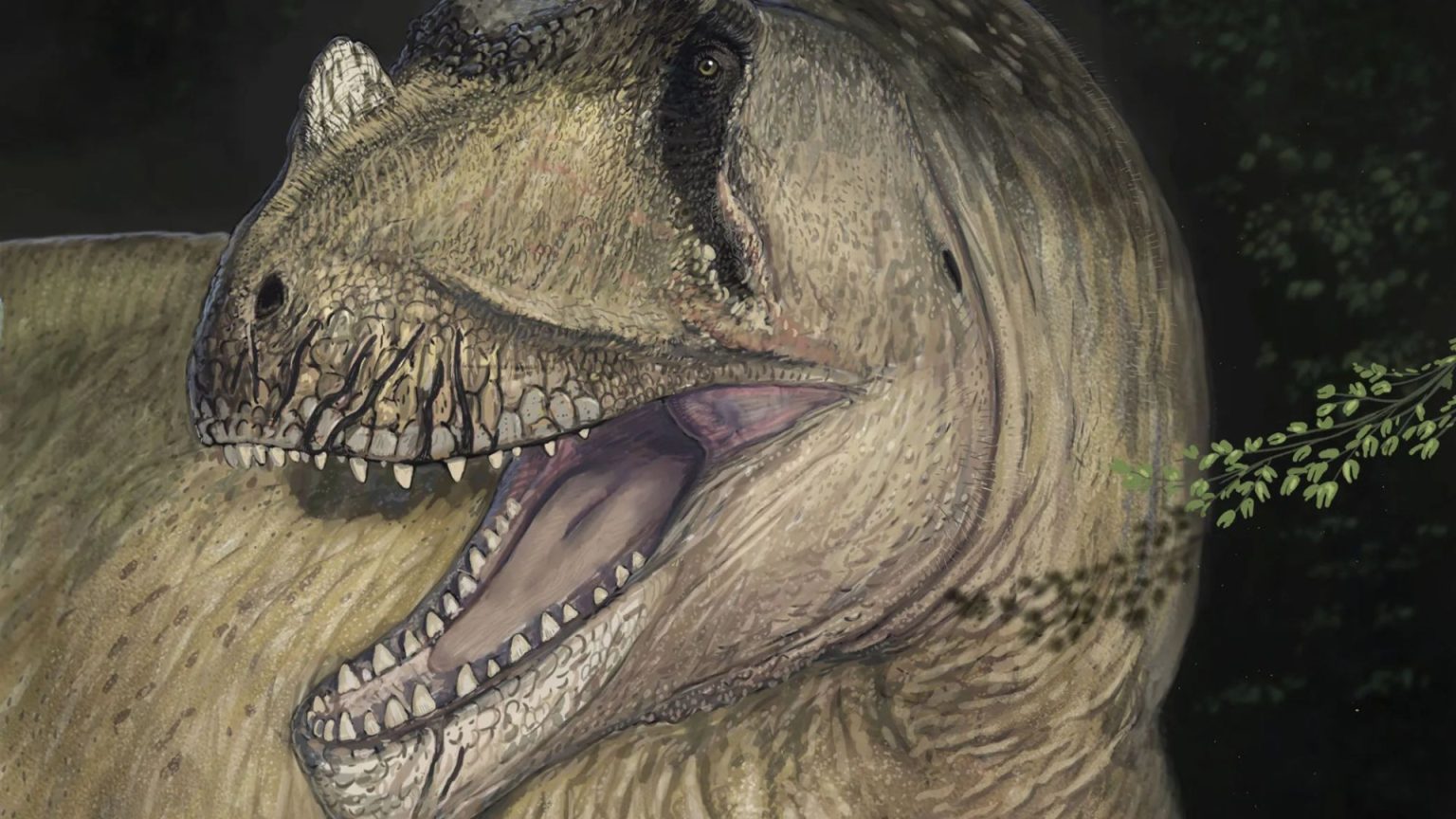The sands of time, often obscuring the echoes of the past, sometimes reveal astonishing secrets through the most unexpected avenues. Such is the story of Tameryraptor markgrafi, a giant horned dinosaur whose existence was brought to light not through the discovery of new fossils, but through the meticulous examination of historical archives. This remarkable find underscores the importance of preserving scientific records and demonstrates how even the ravages of war cannot entirely erase the legacy of prehistoric life.
The story begins in 1914, in the Bahariya Oasis of Egypt, where the German paleontologist Ernst Stromer von Reichenbach unearthed the remains of a massive, 10-meter-long predatory dinosaur. This skeleton, dating back 95 million years, represented a significant discovery, hinting at a greater diversity of dinosaur species in North Africa than previously imagined. Stromer meticulously documented his findings, creating detailed illustrations and capturing black and white photographs of the bones, including parts of the skull, spine, and legs. He initially misclassified the creature as a Carcharodontosaurus, a known predatory dinosaur.
Tragically, the physical evidence of Stromer’s discovery was lost during the Second World War. The bombing of Munich in 1944 destroyed the Bavarian State Collection for Paleontology and Geology, where the Tameryraptor skeleton was housed, along with numerous other invaluable paleontological specimens. For decades, the only vestiges of this prehistoric giant remained within Stromer’s meticulous notes, drawings, and photographs, tucked away in archives, awaiting rediscovery.
Nearly a century later, a team of paleontologists, led by Maximilian Kellermann, delved into Stromer’s archives. As they scrutinized the aged photographs and illustrations, a startling realization emerged: the dinosaur depicted in Stromer’s records differed significantly from the Carcharodontosaurus fossils found in Morocco. The unique features, including symmetrical teeth, small eyes, and a small rounded horn on the bridge of its nose, pointed towards a distinct and previously unknown species. The team recognized the significance of their find and named the dinosaur Tameryraptor markgrafi, honoring both ancient Egypt ("Tamery") and Richard Markgraf, Stromer’s fossil collector who originally excavated the remains.
This remarkable rediscovery highlights the enduring value of meticulous scientific documentation. While the physical fossil was tragically lost, Stromer’s detailed notes and images allowed for the resurrection of this prehistoric giant from the ashes of war. It serves as a potent reminder that scientific archives are not mere repositories of the past, but dynamic resources capable of yielding groundbreaking discoveries even decades or centuries later. The Tameryraptor markgrafi emerged not from the earth, but from the meticulous records of a dedicated scientist, demonstrating that paleontological discoveries can sometimes be found not in the field, but within the pages of history.
The Tameryraptor story resonates with another recent paleontological find, albeit one based on physical evidence rather than archival records. In Oxfordshire, UK, a vast dinosaur "highway" has been unearthed, revealing a plethora of prehistoric footprints. This accidental discovery occurred when a quarry worker noticed unusual bumps while stripping back layers of clay. Upon closer inspection, these bumps turned out to be around 200 dinosaur footprints, some dating back an astounding 166 million years.
The footprints, preserved in remarkable detail, offer a unique glimpse into the lives and behaviors of these ancient creatures. The tracks reveal five extensive trackways, the longest stretching over 150 meters, with the potential for more to be uncovered in the surrounding area. These pathways, etched in time, provide insights into the movement patterns, social interactions, and the tropical environment these dinosaurs inhabited.
The exceptional preservation of the footprints allows scientists to deduce intricate details about the dinosaurs that left them. The impressions reveal how the mud deformed under the weight of the colossal creatures, painting a vivid picture of their passage through the prehistoric landscape. Among the tracks are those of the formidable Megalosaurus, a nine-meter-long predator with distinctive three-toed feet and sharp claws, the first dinosaur to be formally named, back in 1824.
These footprints, in conjunction with other fossilized remains like burrows, shells, and plants, provide a comprehensive snapshot of the ancient ecosystem. They allow scientists to reconstruct the muddy lagoon environment where these dinosaurs roamed, offering a captivating glimpse into a world long vanished. The Oxfordshire discovery, much like the rediscovery of Tameryraptor, emphasizes the power of paleontology to unveil the secrets of the past, whether through the meticulous examination of ancient footprints or the resurrection of lost species from archival records.
Both the Tameryraptor and the Oxfordshire dinosaur highway discoveries underscore the importance of diverse approaches within paleontology. While traditional fieldwork remains crucial, the Tameryraptor story highlights the vital role of archival research in resurrecting lost knowledge and making groundbreaking discoveries from historical data. The Oxfordshire footprints, on the other hand, emphasize the value of serendipitous finds and the detailed analysis of trace fossils in reconstructing prehistoric ecosystems.
These discoveries, though distinct in their nature, share a common thread: they illuminate the rich tapestry of life that has existed on Earth. They provide valuable data points in our understanding of dinosaur evolution, behavior, and the environments they inhabited. Furthermore, they underscore the ongoing nature of scientific discovery, demonstrating that new knowledge can be gleaned not only from freshly unearthed fossils, but also from re-examining existing data and historical records.
The story of Tameryraptor markgrafi stands as a testament to the resilience of scientific knowledge, demonstrating that even the destructive forces of war cannot entirely erase the legacy of discovery. Its rediscovery underscores the importance of meticulous documentation and the potential for groundbreaking findings within historical archives. Alongside the Oxfordshire dinosaur highway, these discoveries remind us that the past is never truly lost, and that new revelations about prehistoric life continue to emerge, enriching our understanding of the planet’s ancient history.
These two discoveries, one a resurrection from historical archives and the other a revelation from beneath the earth, represent different facets of paleontological research. They demonstrate that the pursuit of knowledge about prehistoric life can take many forms, from the meticulous examination of old photographs and drawings to the careful analysis of footprints preserved in stone. Both approaches contribute to a richer and more comprehensive understanding of the dinosaurs that once roamed our planet.
The story of Tameryraptor markgrafi is not just a tale of a dinosaur brought back from the brink of oblivion; it’s a testament to the enduring power of scientific inquiry. It demonstrates that even amidst devastation and loss, the pursuit of knowledge can persevere, yielding remarkable insights into the distant past. This rediscovery, coupled with the unearthing of the Oxfordshire dinosaur highway, provides a powerful reminder that the earth continues to whisper secrets of prehistoric life, waiting to be unearthed by those who listen closely. Whether through painstaking archival research or the chance discovery of fossilized footprints, the past continues to inform our present, enriching our understanding of the complex and fascinating history of life on Earth.




